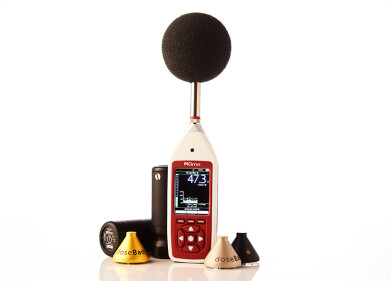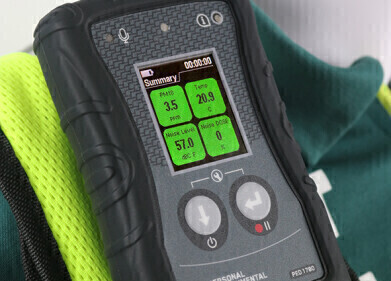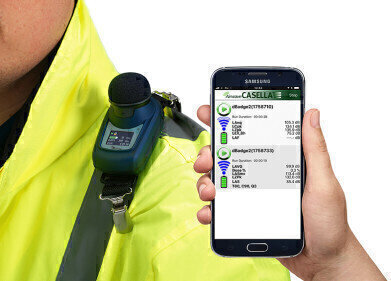Noise monitoring
Is dust under control in your workplace?
Sep 24 2019
Shawcity are offering companies across the UK expert advice on dust control monitoring as well as some of the most advanced instrumentation and control technology to combat the issue. In recent years this has become a topic that has caused a lot of businesses to seek guidance to protect their employees and clients and comply with the legislation. With this in mind and with a new set of HSE inspection upcoming, Shawcity are bringing clarity and assurance to clients who need help ensuring that they are acting in a responsible and legal manner.
The Dust Hub on the HSE website is a key resource for anyone looking to implement protection from dust; it promotes knowledge of dust-related health issues as well as outlining employer responsibilities, control principles and training.
It is important to understand that all uncontrolled dusts are potentially hazardous. Variants each have different chemical components and particle sizes and some are more harmful than others. Excessive exposure to some types has been linked to health problems including asthma and lung cancer. Occupational diseases can cause life-changing health issues or even premature life-ending illness.
Essentially there are four ways in which dust can harm health: Inhalation, skin contact, eye contact and ingestion. Breathing dust into the lungs can create respiratory problems which can sometimes take years to develop. Inhalable dust is invisible to the naked eye and can get trapped in the nose, mouth, throat or upper respiratory tract where it can cause numerous issues. Respirable dust is even finer in particle size and can be breathed deeply into the lungs causing problems including pneumoconiosis.
Certain types of dust can also cause irritation or ulceration of the skin. Dusts such as epoxy resins, rubber processing chemicals, wood dust and fibre glass are known to be a cause of dermatitis. Dust particles in the air can also cause eye damage or irritation, sometimes due to their chemical content.
Workers can swallow dust when it becomes trapped in the mucus which lines the respiratory tract and can cause gastrointestinal irritation. Swallowed dust can also enter the bloodstream where it can cause harmful effects in other organs and tissues.
In addition to the Health and Safety at Work etc. Act 1974, the Control of Substances Hazardous to Health (COSHH) 2002 regulations help employers control risks by providing a framework underpinned by a risk assessment. On the HSE website, the ‘COSHH and your industry’ page allows you to search by industry to view key hazards for 10 specific industry workplaces including engineering, offshore oil and gas, motor vehicle repair and welding.
Dust can be a problem in almost any industry. So, how should employers approach monitoring and controlling it in the workplace? A good starting point is the ‘Dust in the workplace: General principles of protection’ guidance note EH44 published on the HSE website.
This explains simple checks to identify whether a problem exists, employers’ legal responsibilities, Workplace Exposure Limits (WELs), risk assessments, prevention and control measures, local exhaust ventilation (LEV), personal protective equipment (PPE) and respiratory protective equipment (RPE), washing facilities, cleaning, information and training, emergency procedures and health surveillance.
A risk assessment will often identify the need for an air sampling survey to establish the level of exposure. These measurements should be made under normal working conditions and should demonstrate the ability to detect very fine dust particulate.
Dust monitoring instrumentation can take the form of wearable personal dust monitors, handheld portable monitors or area/environmental monitors for indoor and outdoor use which are available to buy or hire for shorter-term or occasional surveys. As with any part of the dust control process, if surveying is not done correctly it will not give an accurate result so ensure your supplier offers a comprehensive after-sales service and free product user training.
PPE, which includes RPE, should be used as part of a strategy for controlling exposure and should only be considered when all other practicable measures cannot achieve adequate control - not as a substitute. All PPE should be selected according to the type of airborne hazardous substances (dust, fumes, fibres, mists, gases, vapours) and should be introduced alongside a programme which covers all aspects of selection, use and maintenance. The properties of the hazardous substances, the needs of the wearer, the task and the workplace conditions should all be taken into consideration.
RPE wearers are legally required to be fit tested to ensure they are competent in wearing and maintaining their RPE, as well as establishing that the RPE actually fits without leaks. People come in many different shapes and sizes, as do face masks. Research shows that up to 50% of all RPE used does not offer the assumed level of protection because it simply doesn’t fit properly and cannot create an effective seal.
Fit testing must be carried out by a competent person using an approved method and technology. The fit2fit.org website, backed by the BSIF and HSE, contains companion guides for the whole range of different fit testing methods as well as a register of accredited Fit2Fit testers.
Digital Edition
IET 35.2 March
April 2025
Air Monitoring - Probe Sampling in Hazardous Areas Under Extreme Conditions - New, Game-Changing Sensor for Methane Emissions - Blue Sky Thinking: a 50-year Retrospective on Technological Prog...
View all digital editions
Events
Apr 21 2025 Shanghai, China
Apr 22 2025 Hammamet, Tunisia
Apr 22 2025 Kintex, South Korea
Analytica Anacon India & IndiaLabExpo
Apr 23 2025 Mumbai, India
Apr 23 2025 Moscow, Russia










_(4427399123)-(2).jpg)








